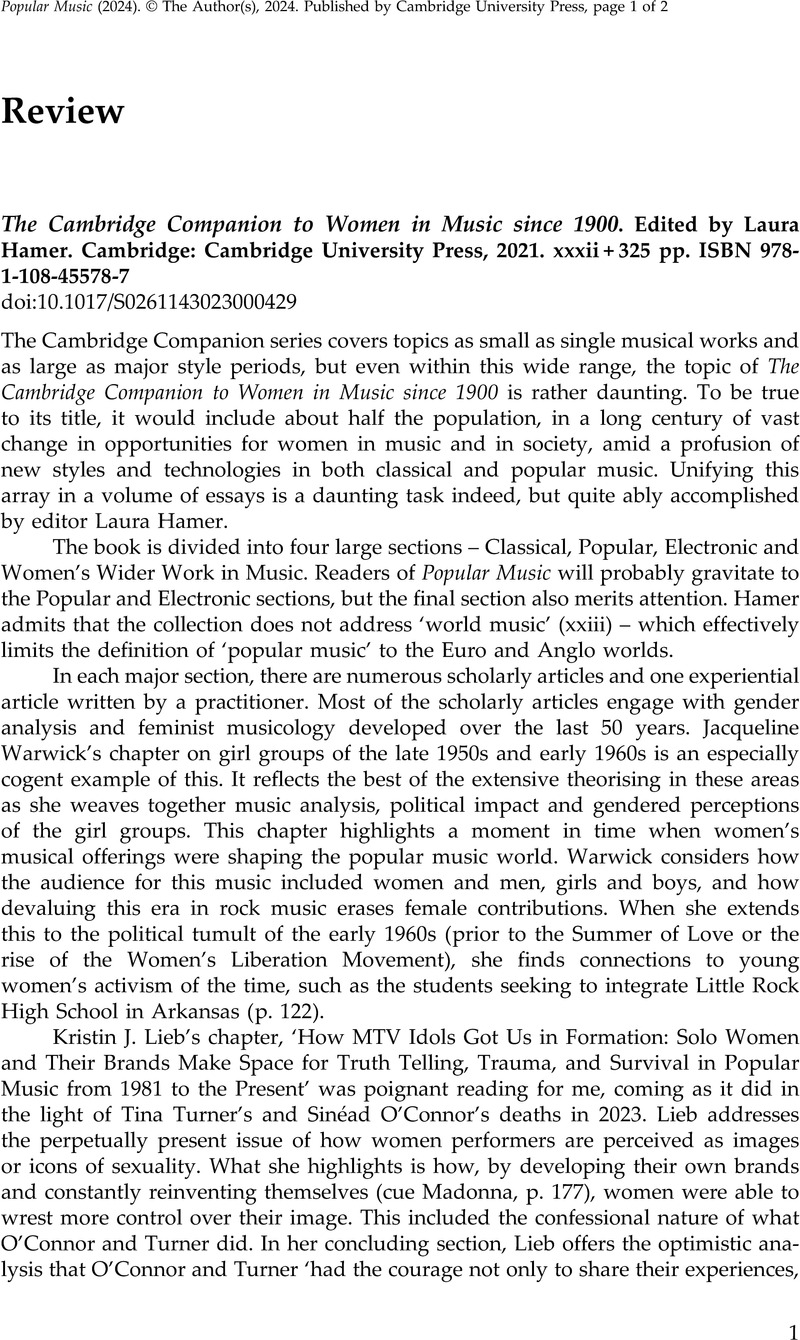No CrossRef data available.
Article contents
The Cambridge Companion to Women in Music since 1900. Edited by Laura Hamer. Cambridge: Cambridge University Press, 2021. xxxii + 325 pp. ISBN 978-1-108-45578-7
Review products
The Cambridge Companion to Women in Music since 1900. Edited by Laura Hamer. Cambridge: Cambridge University Press, 2021. xxxii + 325 pp. ISBN 978-1-108-45578-7
Published online by Cambridge University Press: 02 February 2024
Abstract
An abstract is not available for this content so a preview has been provided. Please use the Get access link above for information on how to access this content.

- Type
- Review
- Information
- Copyright
- Copyright © The Author(s), 2024. Published by Cambridge University Press



